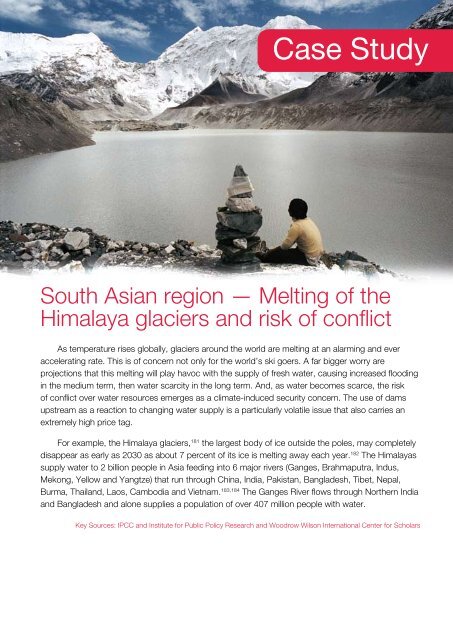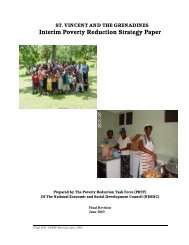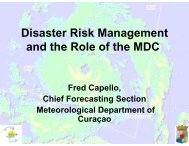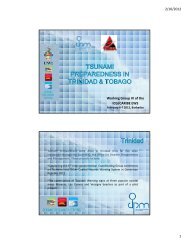The Anatomy of A Silent Crisis The Anatomy of A Silent Crisis
The Anatomy of A Silent Crisis The Anatomy of A Silent Crisis
The Anatomy of A Silent Crisis The Anatomy of A Silent Crisis
- TAGS
- anatomy
- www.bb.undp.org
You also want an ePaper? Increase the reach of your titles
YUMPU automatically turns print PDFs into web optimized ePapers that Google loves.
Case Study<br />
<strong>The</strong> human impact <strong>of</strong> climate change – Already serious today 57<br />
South Asian region — Melting <strong>of</strong> the<br />
Himalaya glaciers and risk <strong>of</strong> conflict<br />
As temperature rises globally, glaciers around the world are melting at an alarming and ever<br />
accelerating rate. This is <strong>of</strong> concern not only for the world’s ski goers. A far bigger worry are<br />
projections that this melting will play havoc with the supply <strong>of</strong> fresh water, causing increased flooding<br />
in the medium term, then water scarcity in the long term. And, as water becomes scarce, the risk<br />
<strong>of</strong> conflict over water resources emerges as a climate-induced security concern. <strong>The</strong> use <strong>of</strong> dams<br />
upstream as a reaction to changing water supply is a particularly volatile issue that also carries an<br />
extremely high price tag.<br />
For example, the Himalaya glaciers, 181 the largest body <strong>of</strong> ice outside the poles, may completely<br />
disappear as early as 2030 as about 7 percent <strong>of</strong> its ice is melting away each year. 182 <strong>The</strong> Himalayas<br />
supply water to 2 billion people in Asia feeding into 6 major rivers (Ganges, Brahmaputra, Indus,<br />
Mekong, Yellow and Yangtze) that run through China, India, Pakistan, Bangladesh, Tibet, Nepal,<br />
Burma, Thailand, Laos, Cambodia and Vietnam. 183,184 <strong>The</strong> Ganges River flows through Northern India<br />
and Bangladesh and alone supplies a population <strong>of</strong> over 407 million people with water.<br />
Key Sources: IPCC and Institute for Public Policy Research and Woodrow Wilson International Center for Scholars







